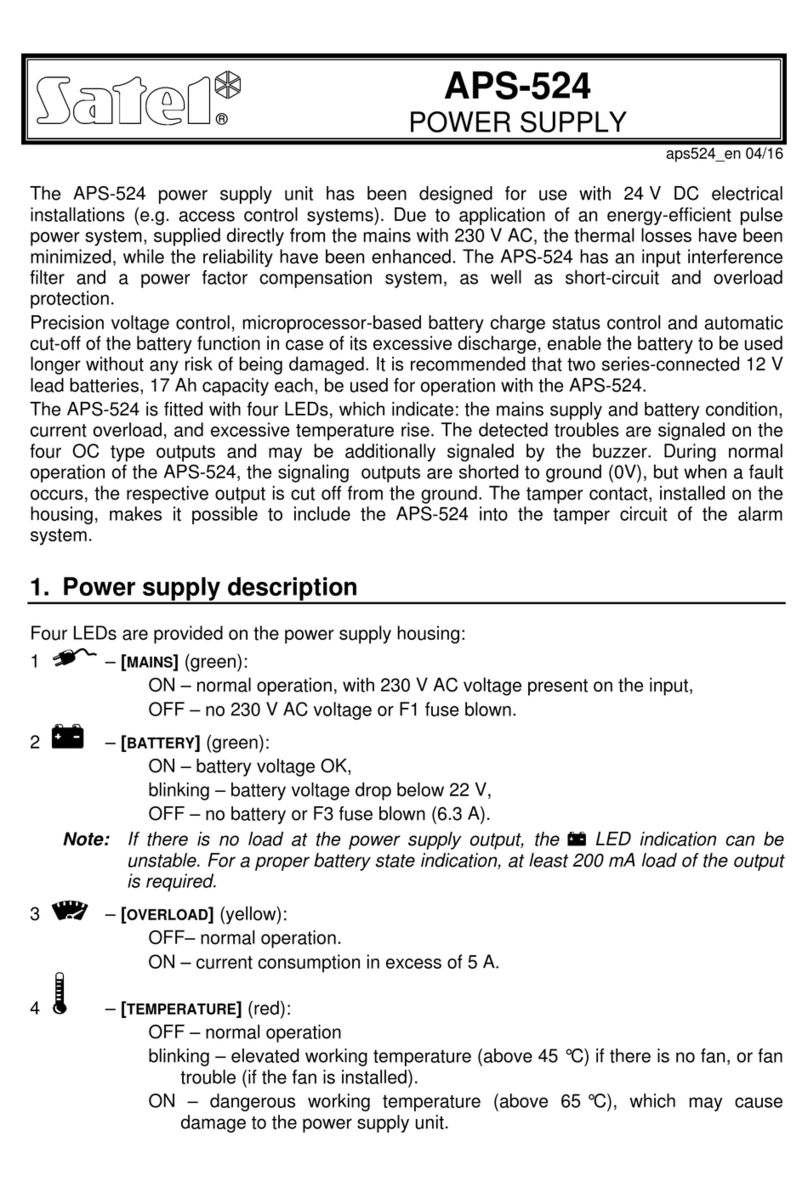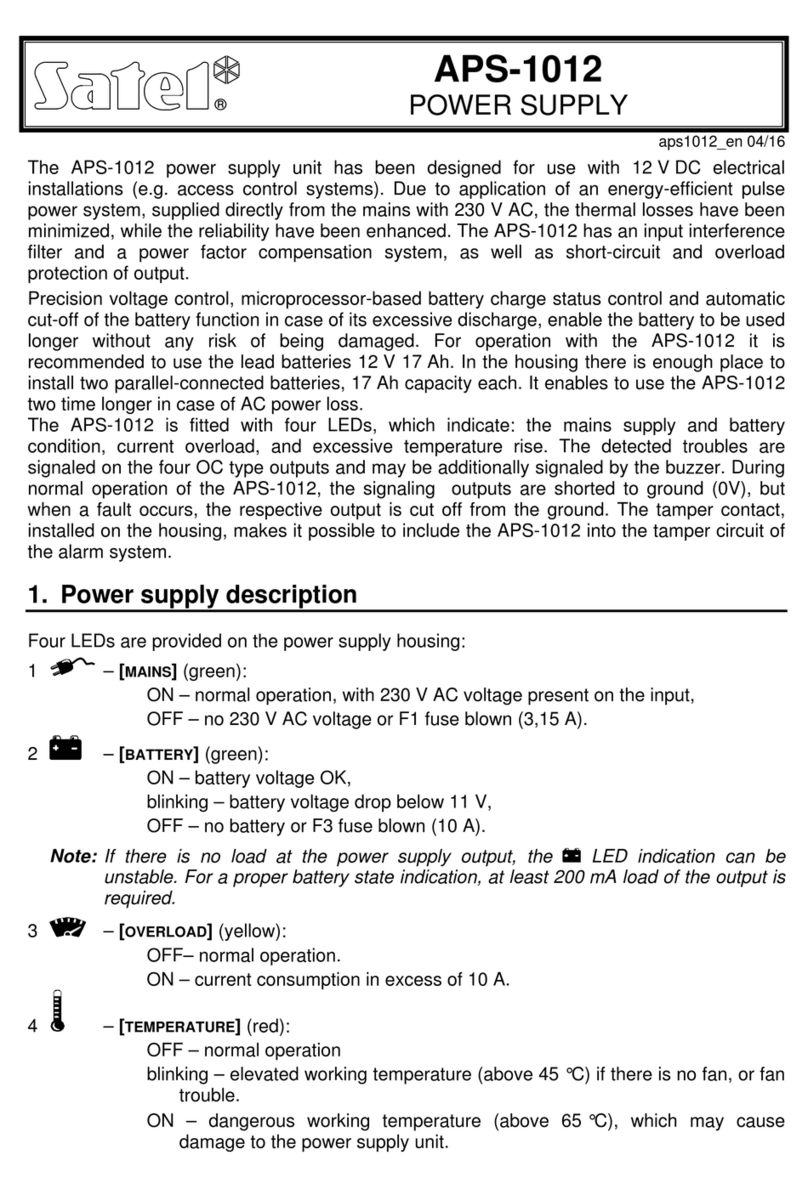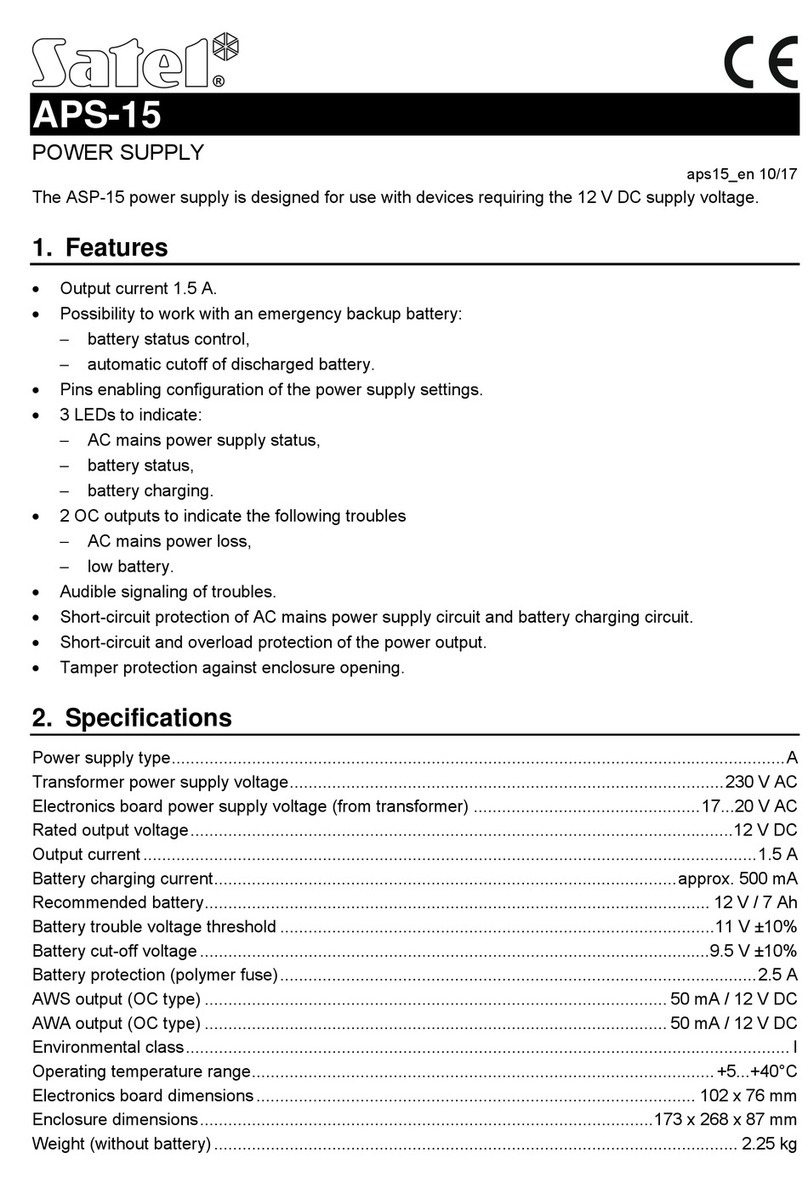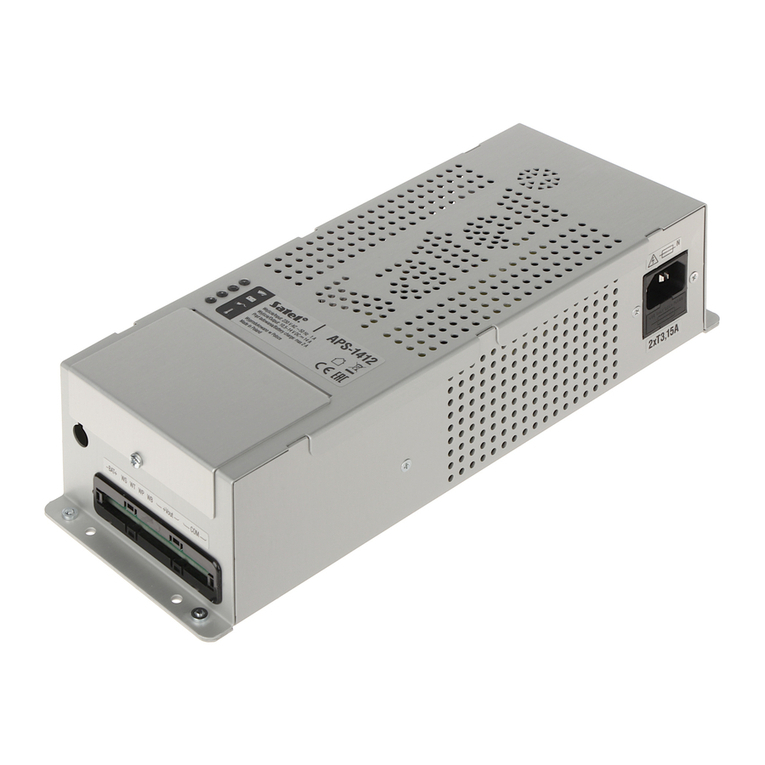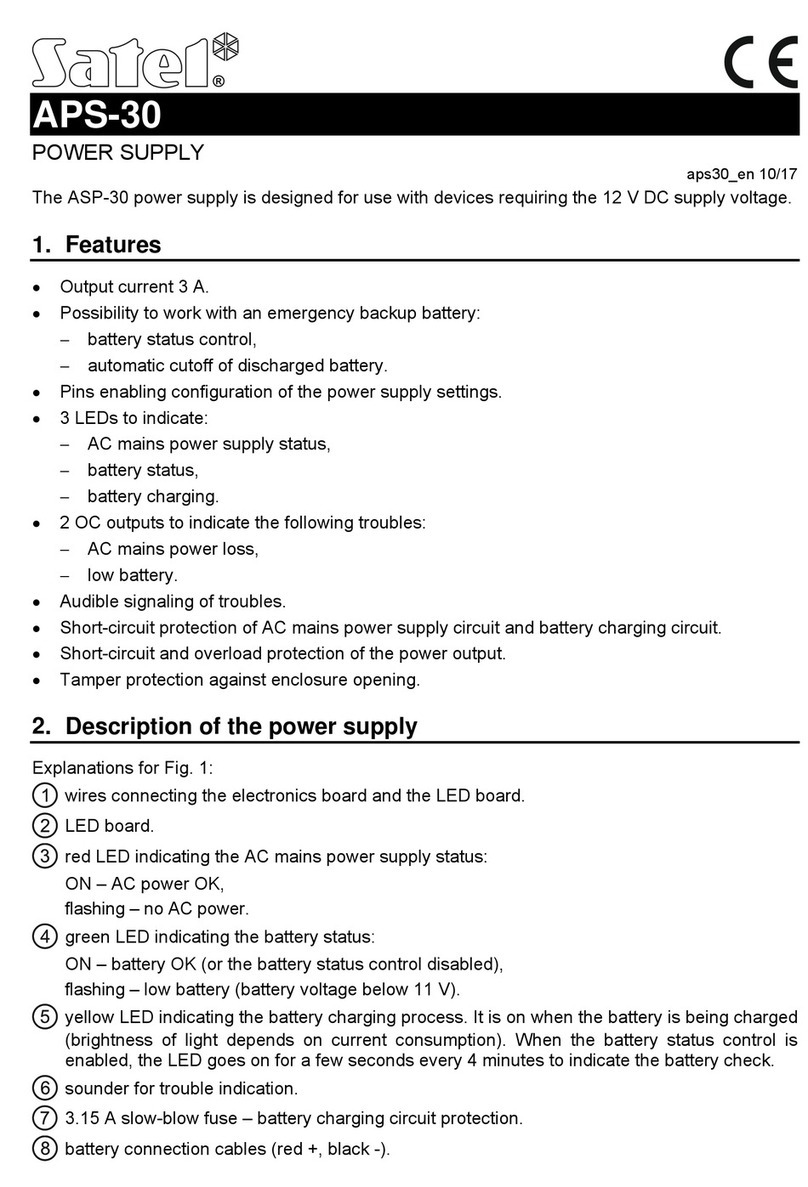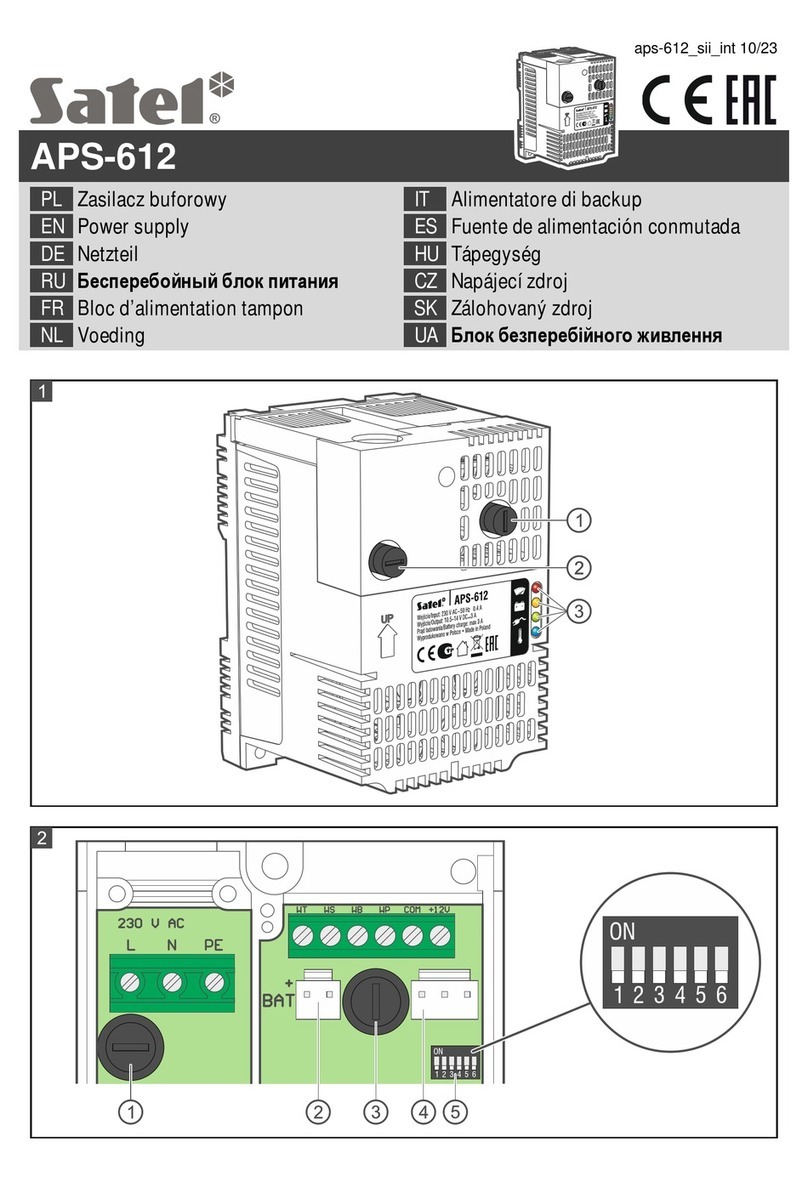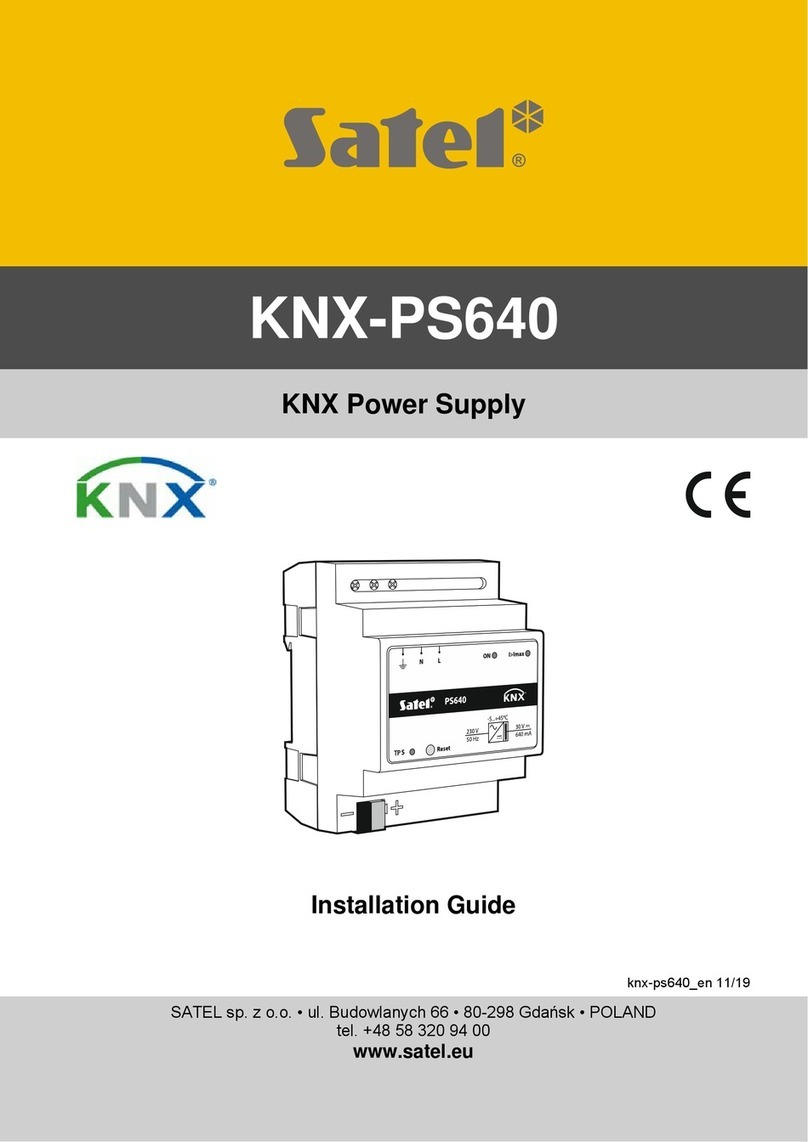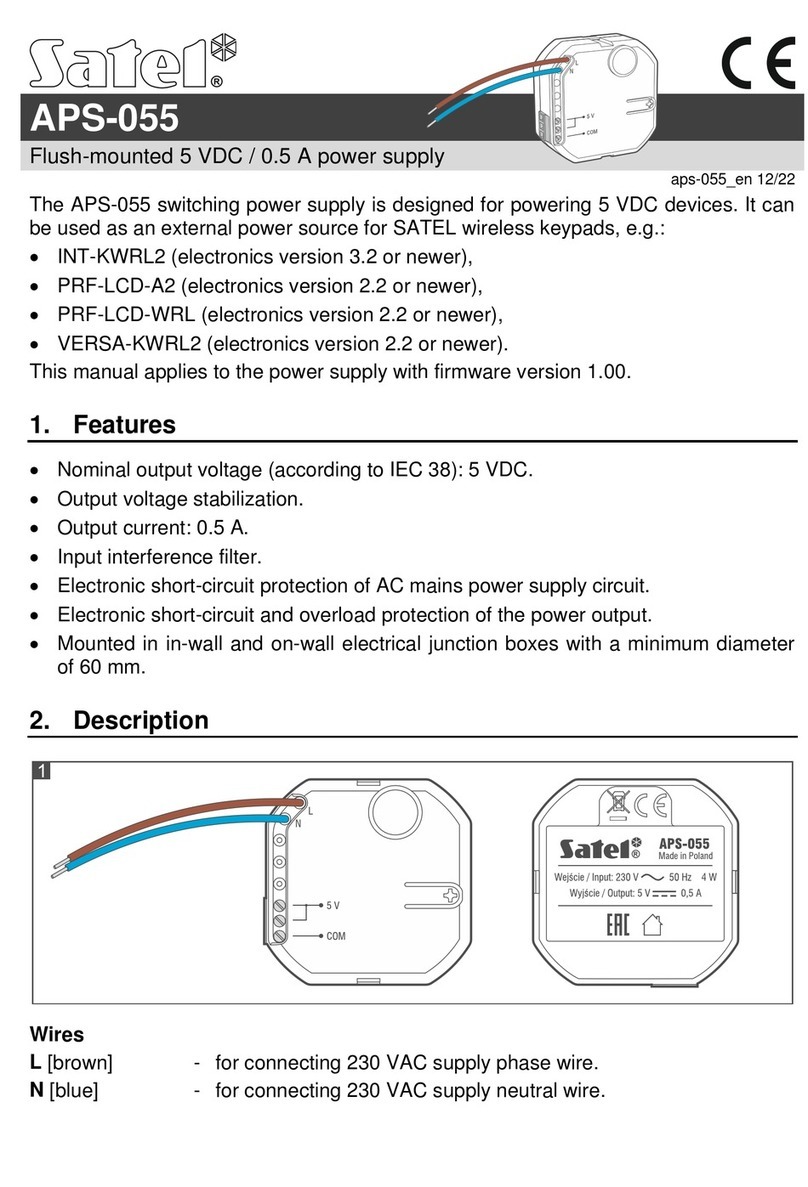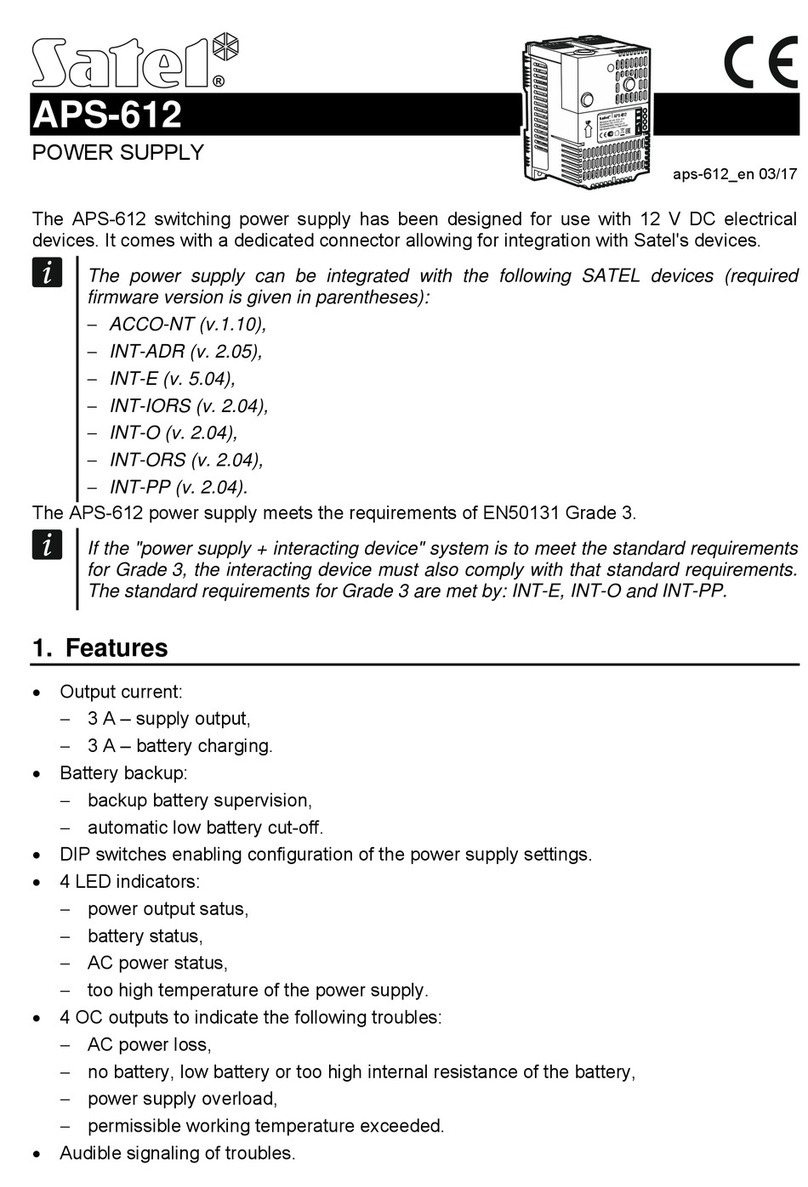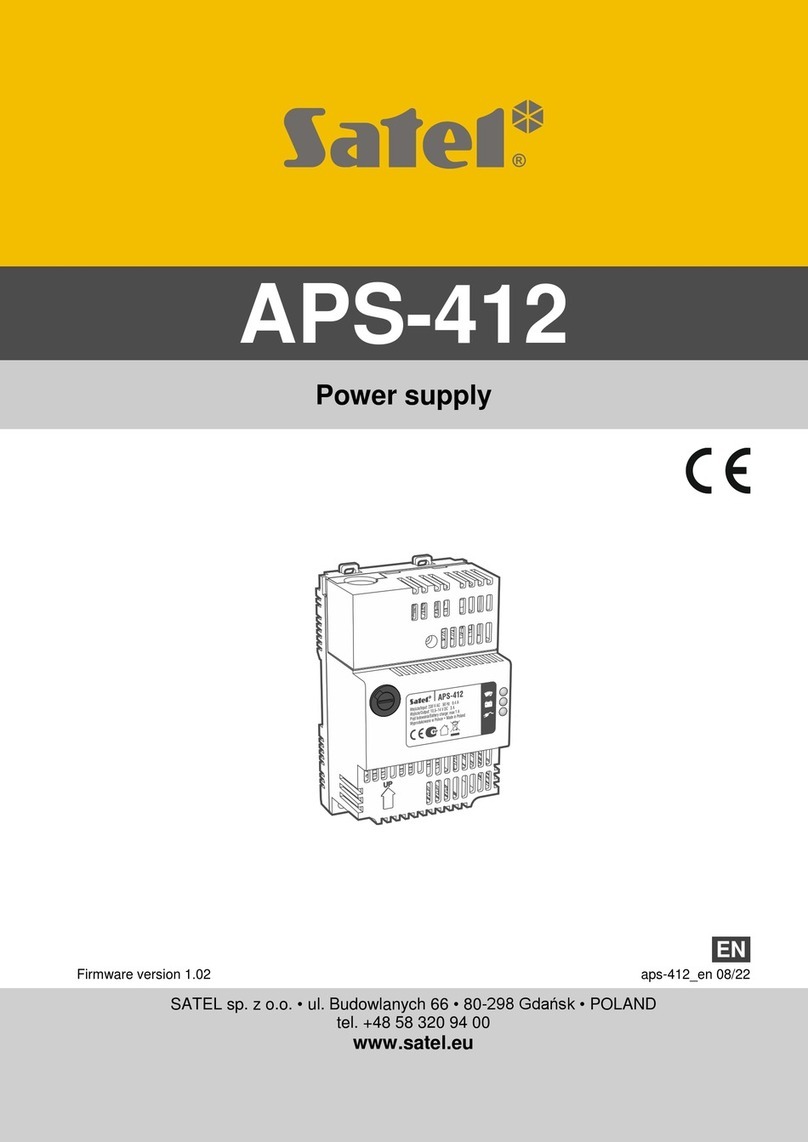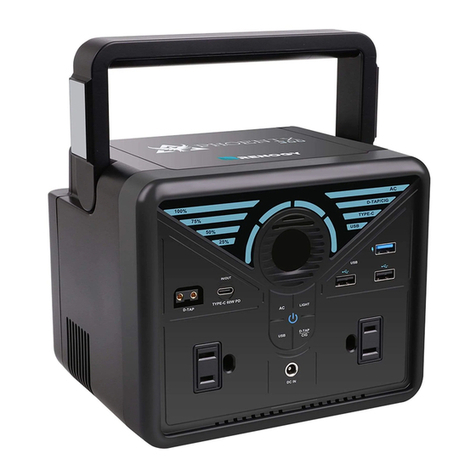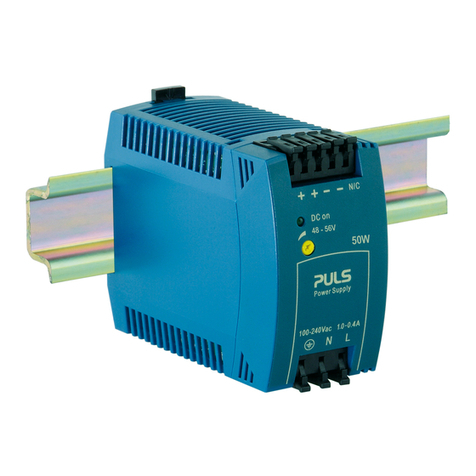
APS-15 SATEL
3
4. Using the installed cables, connect the transformer output voltage (rated at 18V AC) to
the AC terminals on the electronics board.
5. Connect the cables of receivers to the terminals +12V and COM of the terminal block on
power supply board.
6. If necessary, connect the AWS and AWB outputs with the control panel zones. During
normal operation of the power supply unit, the signaling output is shorted to the ground
(0V), but when a failure situation occurs, it becomes cut off from the common ground.
10k
3.9k
10R AWS
BC 847B
10k
3.9k
10R AWA
BC 847B
AWS AWA
Fig. 2. Diagrams of AWS, AWA outputs
7. Using jumpers, set the time delay on the AC FAIL DELAY pins after which 230V mains
supply failure will be signaled on the AWS output. The possible settings are:
0 seconds – Pins open
60 seconds – Pins shorted
600 seconds –
1800 seconds –
8. Using the BEEP pins, determine, whether the beeper is to be switched on (jumper on), or
not (jumper off).
9. Switch on the 230V AC mains supply and insert the mains fuse located in the transformer
housing (if all connections are made correctly, LEDs MAINS and BATTERY should light
up).
10.Having connected the power supply unit, you can measure the voltage across battery
cables. The voltage set during production process is 13.6 – 13.8V and should not be
changed.
11.Connect the battery according to the colour marking.
If the battery is discharged, the green LED (BATTERY) will start blinking approx.
4 minutes after the 230V AC mains supply is switched on. If the battery is connected after
this time (green LED is blinking), the battery charging conditions will be known when the
next test is carried out by the power supply after approx. 12 minutes. During the testing,
the processor reduces power supply voltage down to about 10.5V, while the receivers
are supplied from the battery
The battery state of charge is tested every 4 minutes for some 10 to 20 seconds. If the
battery voltage decreases to approx. 11V over three consecutive cycles, the power
supply unit will signal a failure, and when the voltage drops to 9.5V, the power supply will
disconnect the battery to protect it from complete discharge and damage.
The battery test function can be disabled by removing the jumper TEST BAT. Disabling
the test will also deactivate the battery failure signaling on the AWA output, without,
however, switching off the circuit which protects the battery from complete discharge.
12.Next, the proper operation of failure monitoring circuits can be checked (with the TEST
BAT jumper set on):
